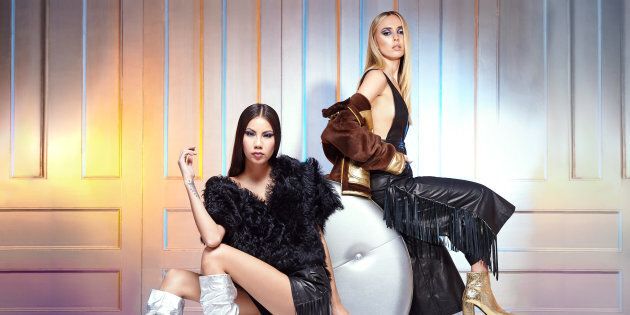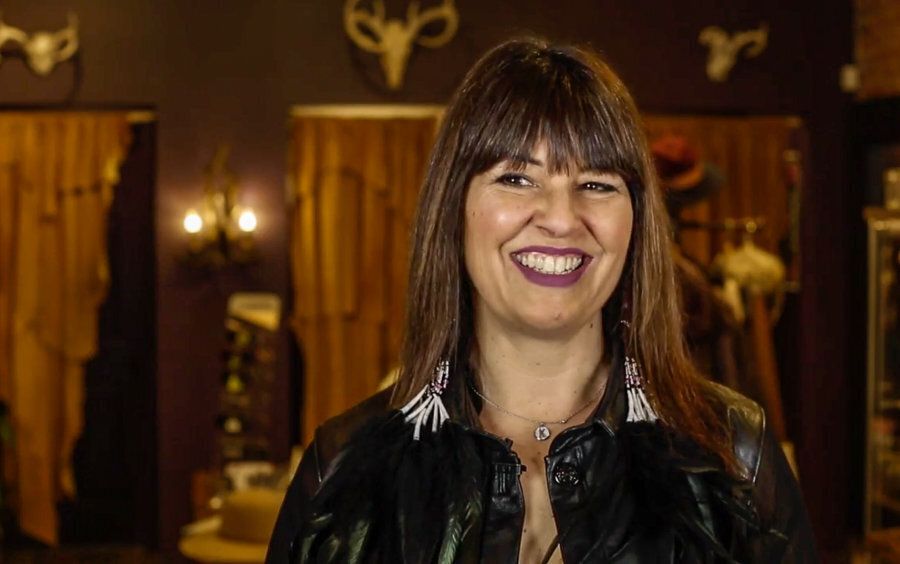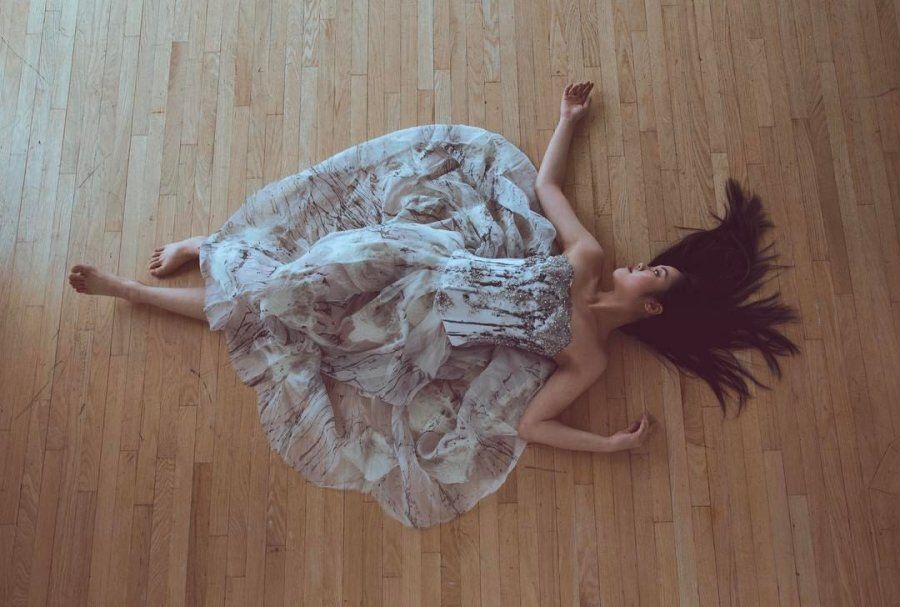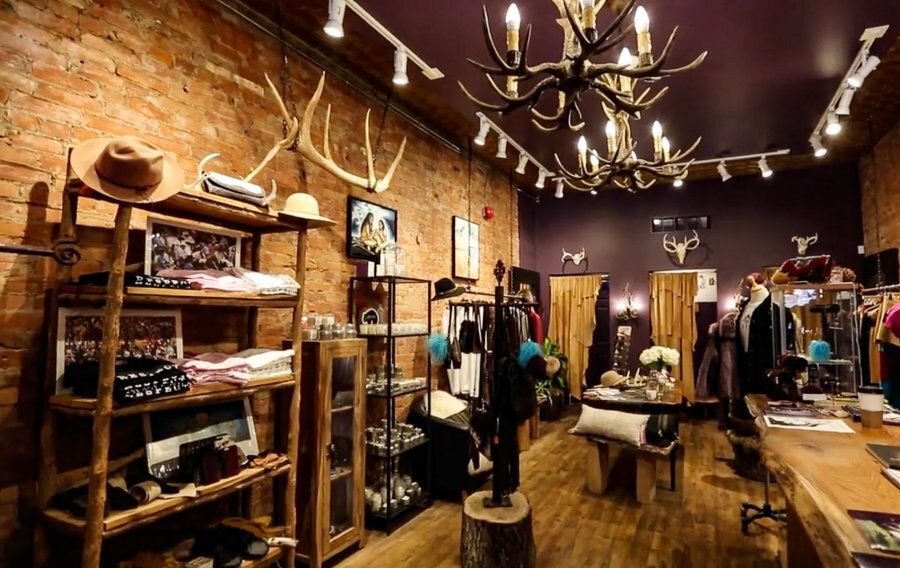
Angela DeMontigny knew that the client who ordered a beaded dress was going through a tough divorce. As she made it, spending more than 40 hours sewing colourful beads into the Italian suede by hand, she thought about the person who would wear it.
"She's putting her soul into this garment to care for that person," said Riley Kucheran, an Ojibwe PhD student at Ryerson University who studies Indigenous fashion. "It's a level of attention that you don't really see in the Western fast fashion world."
Kucheran worked with DeMontigny for three months in 2017, studying her business for his master's thesis in communication and culture. He says that DeMontigny steeps her designs with spiritual intention.
The Hamilton, Ont.-based designer is introducing authentic Indigenous design to the high fashion world, where it has long been ignored or appropriated in tired stereotypes.
Every single item sold at her store is either made or designed by an Indigenous person. On the racks hang one-of-a-kind cowhide purses, leather jackets in ballet slipper pink and T-shirts emblazoned with the word "respect." On the shelves sit hand-poured soy candles and sparkling silver and gold jewellery. The walls are decked out with deer skulls and antlers that DeMontigny found in her father-in-law's backyard at Six Nations.
DeMontigny's high-end line is made in Canada. Jackets on her online store go for at least $1,695 while skirts and tops start at $395. She's shown her work internationally, at events for London Fashion Week and South Africa Fashion Week.

Still, DeMontigny said, people are surprised when she says she's Indigenous.
"They expect to see things that are not high fashion," she told HuffPost Canada. "I think in North America specifically, Indigenous people are pretty much invisible, especially in the fashion industry."
It's extremely rare to see an Indigenous model on a runway or in an ad campaign, DeMontigny said, even here in Canada. When you do see an Indigenous model, they're usually working for an Indigenous designer.
We have unbelievably beautiful women in our nations across North America ... but we need that visibility.Angela DeMontigny
"I feel a responsibility to help that process along. We have unbelievably beautiful women in our nations across North America ... but we need that visibility."
When people do imagine native fashion, it's often based on tropes and stereotypes.
Native American designer Patricia Michaels, who was featured on Project Runway, said people at markets used to always tell her that her work didn't look native enough.
"People would come to my booth and say, 'Well this isn't native. What's native about it?' I would say, 'I'm native and that's all you have to know,'" she told HuffPost Canada in an interview. "To this day, I can still go on a photoshoot and some non-native will tell me that my work doesn't fit the native attire. Some people still have the audacity to say that."

Michaels, who lives in Taos Pueblo, N.M., said she was drawn to fashion after being bullied as a kid for being Native American.
She pored over photos of Native American regalia at the library. What she saw inspired her to show the world that being native isn't a bad thing — quite the contrary. When European settlers arrived in North America, Michaels said, the clothing native people wore were "so far out, so exquisite, so brilliant and so fabulous that it is still on trend today."
"It's the longest run a trend has ever gone in the history of the human race," she said.
The next photoshoot, I don't want to be in some weeds outside ... take me to Versailles!Patricia Michaels
Despite her rich heritage which serves as inspiration, Michaels said it's still hard to get the respect she deserves.
"The next photoshoot, I don't want to be in some weeds outside, or in some old place that is run down, take me to Versailles!"
Disrespect has been a central thread in the fashion industry's relationship with Indigenous communities, according to Kucheran, the PhD student who studied with DeMontigny.
"Literally for centuries, the fashion industry has stolen Indigenous cultural objects and styles, made it into something different, stripped the meaning from it. Indigenous people haven't had control over their own lives," he said.

In his research, Kucheran has read about residential school officials taking children's clothes and throwing them out, or even burning them.
"That was meant to literally strip them of their identity."
Because of that history, and laws like the Indian Act which outlawed Indigenous cultural practices, it's devastating to see huge corporations profit off Indigenous styles today, Kucheran said.
DeMontigny said these companies don't realize the damage they're doing.
"That is really exploiting our culture for profit and our people have lost enough I think, over the centuries," she said.
More from HuffPost Canada:
Everyday in her store, DeMontigny educates shoppers about what actually constitutes cultural appropriation.
"They're like 'Oh well I'm not allowed to wear this.' What? Of course you are! But don't buy it from The Gap."
To buy a Navajo print at Urban Outfitters, for example, would be appropriation. To buy a DeMontigny garment supports an Indigenous designer, a sustainable supply chain, and an entire community.
And the market for the latter is growing, DeMontigny said.
"I think people are really yearning for things that have meaning."